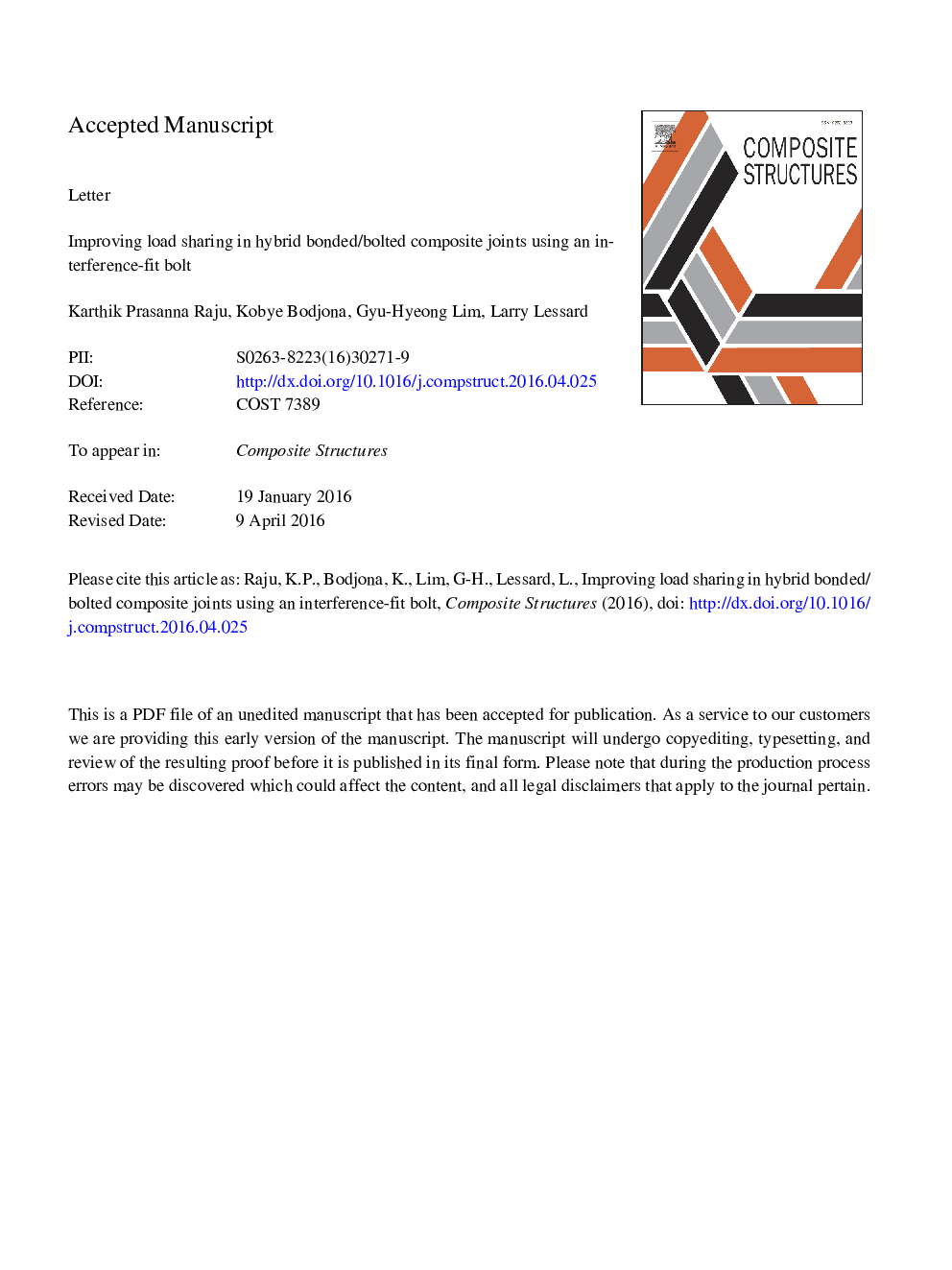| Article ID | Journal | Published Year | Pages | File Type |
|---|---|---|---|---|
| 6705655 | Composite Structures | 2016 | 22 Pages |
Abstract
Load sharing between an adhesive bond and a bolted connection in a hybrid bonded/bolted joint has been experimentally demonstrated in previous studies using a low modulus adhesive. The possibility of sharing load between the two joining mechanisms can potentially result in a joint having higher static and fatigue strength compared to the underlying bonded and bolted joint separately. However, in such designs, despite using a low modulus adhesive, substantial load sharing seems to occur only after the adhesive in the hybrid joint has yielded. This limits the load sharing capability of the hybrid joint. In order to improve the load sharing, a new design using an interference-fit bolt instead of the conventional neat-fit or clearance fit bolt for hybrid joints has been investigated using a three-dimensional finite element model in this study. The interference fit hybrid joint model showed 10% higher load sharing at equivalent load levels and activation of load sharing between the bolt and the adhesive as soon as the joint is loaded, a capability not achieved through conventional hybrid joint designs.
Related Topics
Physical Sciences and Engineering
Engineering
Civil and Structural Engineering
Authors
Karthik Prasanna Raju, Kobye Bodjona, Gyu-Hyeong Lim, Larry Lessard,
